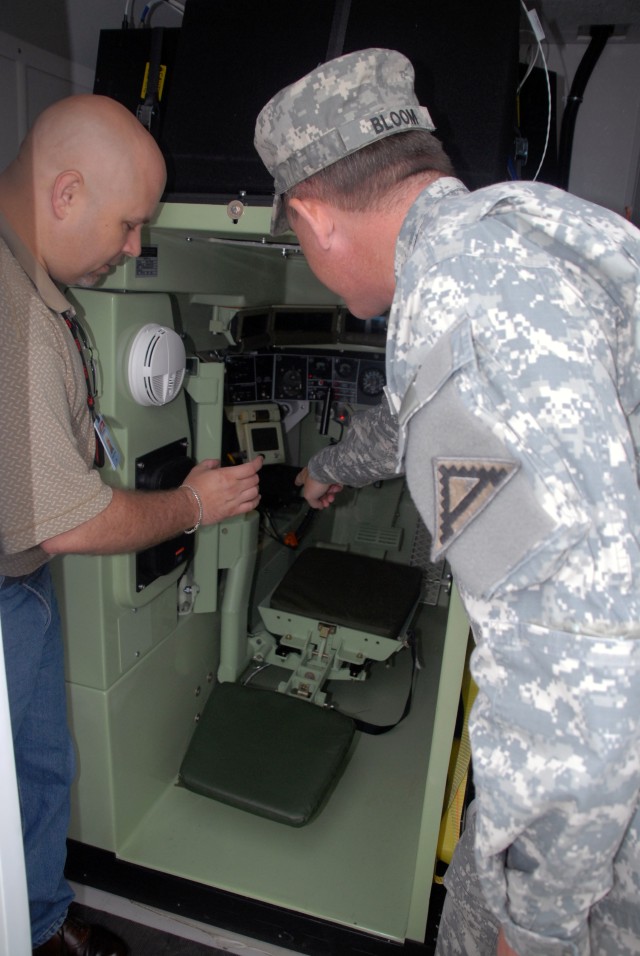
At the U.S. Army's Joint Multinational Training Command's Training Support Activity-Europe, Soldiers hone their heavy-equipment operating skills using the Mobile-Close Combat Tactical Trainer, and receive enhanced training for light-wheeled vehicles using the Virtual Combat Convoy Trainer.
The TSA-E's trainers, located in Grafenwoehr, Germany, look like ordinary trailers from the outside. But on the inside they are high-tech simulators used to train Soldiers on tactical equipment and vehicle operation.
"Our motto is 'train to win.' We want to ensure troops deploying downrange to Iraq and Afghanistan are fully trained in their MOS specialties and have trained to standard on mission-specific skills such as convoy operations, information operations and counter-IED to name just a few key tasks," said Brig. Gen. David Hogg, commanding general of the 7th U.S. Army's Joint Multinational Training Command. "In addition we want to ensure that they are qualified on their combat systems such as tanks and Bradleys.
"We have developed the capability here to train our Soldiers and coalition partners smarter, more safely and more cost effectively using a suite of training tools, live, virtual and constructive, and we continue to maintain the ability to export our training capabilities anywhere, at anytime," Hogg said.
"Here at TSA-E we provide Soldiers with state-of-the-art training support throughout U.S. Army Europe's area of responsibility," said Daniel Feazelle, virtual program specialist. "The virtual training simulates wartime operations before we ever put our Soldiers in harm's way."
The M-CCTT trainer uses four trailers to train more than 70 Soldiers weekly on the operations of the Bradley fighting vehicle and M-1 Abrams tank.
"Twenty years ago we could not have done this type of virtual training. Today, simulations allow Soldiers to fight battles in any region of the world, anywhere they are deployed," said Kelly Clifton, contract-trainer specialist. "The virtual training allows them to become familiar with the terrain, the operation of the machine and equipment, and instills confidence through training and repetition."
The virtual experience is more than just driving the vehicles," said Clifton. "It's about learning to communicate with other members of the team. It's about getting a battle rhythm."
For example, while in a convoy operation, gunners and drivers work together. Gunners have the best view and help the drivers navigate through the terrain and streets, while also making sure everyone in the convoy stays together, said Clifton.
"The virtual training exercises a Soldier's leadership abilities and helps them to make quick and sound decisions, while maintaining command and control of their vehicles," he added.
Because of the JMTC's central location, militaries from Poland, the Czech Republic, Bulgaria, Romania and North Africa also use the center's training areas or request mobile training at their locations.
"We are training our Soldiers as well as the soldiers of allied countries, to include those fighting alongside us in Iraq and Afghanistan, to become familiar with our battle-command systems and technology up front," said Hogg. "The first time we arrive on the battlefield should not be the first time that our coalition partners have had the opportunity to work with our Soldiers, equipment or systems. We train to ensure we are all tactically proficient and have the confidence to accomplish any mission in a coalition environment."

Social Sharing